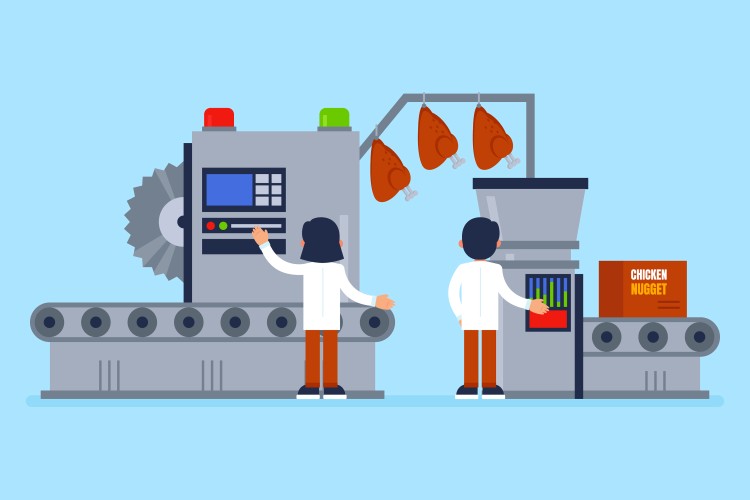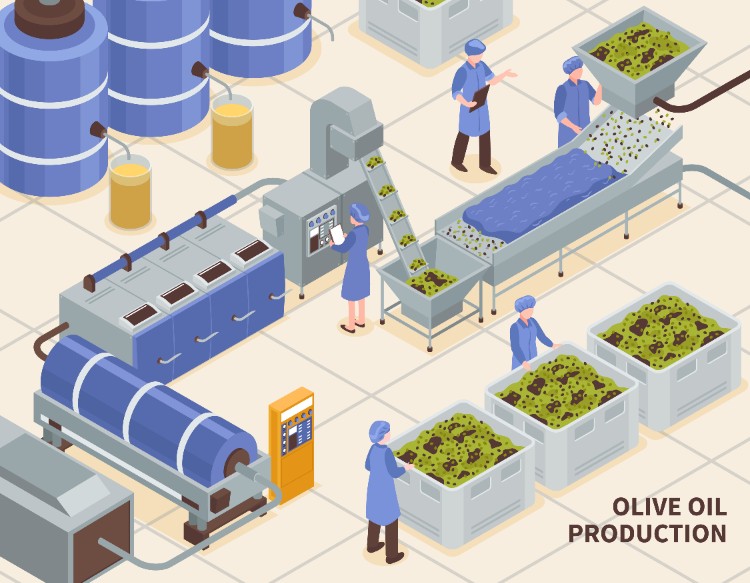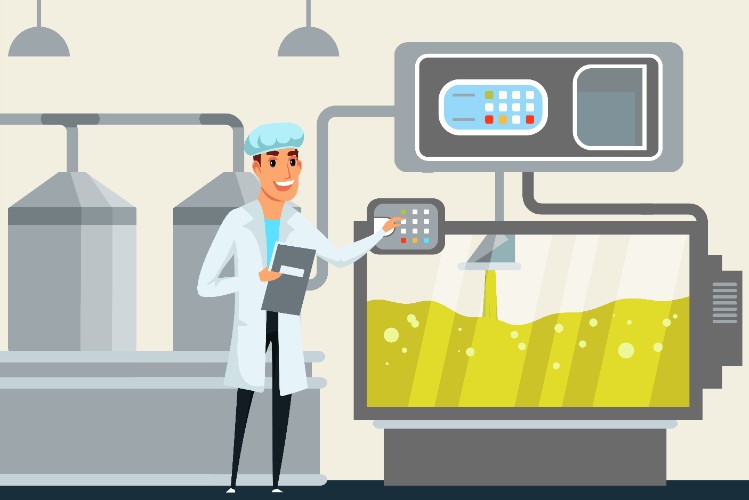Why Clean Food Factories Still Get Dirty?
You’d think a spotless floor means a safe product. We used to think so too. But even when everything looked clean, trouble kept popping up. Failed audits, bacteria spikes, even spoilage in our finished product.
At Shandong Shine, we manufacture more than just the Shine HOCl Generator. We bring real-world answers to hard-hitting sanitation problems in the food processing world. When we asked, Why do clean food factories still get dirty?, we didn’t expect what we found.
Let us take you behind the scenes.

Clean Equipment ≠ Clean Factory
Every team wipes down machines. Scrubs the drains. Mops the floors. And still, foodborne illness sneaks through.
Here’s why the cleaning processes often don’t cut it:
· Cleaning doesn’t always mean sanitizing
· Sanitizing doesn’t guarantee kill rates
· Microbes bounce back faster than we think
· Cross-contamination happens in a flash
Looks are deceiving. A stainless steel mixer can gleam while still hiding colonies of bacteria viruses in a scratch or screw head.
Why Clean Food Factories Still Get Dirty
It comes down to five key issues:
1. Biofilms that resist surface cleaning
2. Improper sanitizers or weak cleaning solutions
3. Human error in standard operating procedures
4. Dirty raw materials entering clean zones
5. Lack of verification and testing
We faced all five—and we fixed them with better chemistry and tighter workflows.

Where the Dirt Really Hides
You can’t fix what you don’t find. So, where does the hidden dirt hang out?
Gaskets and Seals
Rubber grooves trap fats and proteins. Over time, they ferment. They stink. They harbor pathogens.
Underside of Equipment
When’s the last time someone cleaned under the slicing table? Or behind the gearbox?
Drains and Traps
These look clean at the surface. But inside? A biofilm paradise.
Vents and HVAC
Air carries particles. Particles carry pathogens. Your ductwork might be your worst enemy.
Worker Touch Points
Gloves. Buttons. Door handles. Every unwashed finger leaves its mark.
Biofilms—The Silent Saboteur
Biofilms form when bacteria cluster together and build a shield of slime. They stick to surfaces, multiply, and resist normal cleaning agents.
Even high pressure water barely dents them. And bleach? Sometimes it kills the top layer—but leaves the core intact.
That's where generated hypochlorous acid comes in.
It penetrates biofilms. It breaks them apart. It actually works.
What We Changed to Get Real Results
We ditched guesswork and built a science-backed workflow:
1. Start with thorough dry cleaning—no moisture at this stage
2. Apply alkaline cleaning solutions to break proteins
3. Rinse with high pressure water
4. Spray or fog hypochlorous acid
5. Allow proper contact time (minimum 1 minute)
6. Swab surfaces and verify ATP levels
7. Log it, review it, repeat it
This isn’t overkill. This is survival.
Shine HOCl Generator—Our Secret Weapon
Our Shine HOCl Generator changed the game.
Here’s why we trust it:
· It creates hypochlorous acid fresh, right when we need it
· It works on a wide range of surfaces
· It kills Listeria, E. coli, Salmonella—fast
· It doesn’t corrode stainless steel
· It’s safe around the finished product
We use it in open plant fogging, surface spraying, even boot dips. One machine, endless applications.
From Chaos to Control—Our Case Study
Let’s take our chicken processing facility. A few years ago, we had:
· Weekly swab failures
· Slime buildup under the de-feathering units
· Complaints about odors
· $3,000/month on chemical sanitizers
After switching to HOCl-based sanitation:
Before | After 90 Days |
16 failed ATP swabs/week | 1 fail/week |
Chemical costs: $3,000 | Costs: $1,050 |
2 product rejections/month | 0 |
8 worker complaints/month | 0 |
It wasn’t magic. It was discipline, and using the right tools.
Long Term Gains That Matter
Let’s talk more than numbers. Let’s talk peace of mind.
We now sleep easier knowing:
· Our food meets the strictest food safety standards
· Our production processes run smoother
· Our audits go faster
· Our staff feel safe—not sick or irritated
· Our brand reputation stands strong
That’s what proper cleaning really delivers.
Why Some Cleaning Processes Still Fail
Even with protocols, problems creep in.
Rushed Cleanups
When production deadlines push cleaning into a corner, everyone loses.
One-Size-Fits-All Products
Different surfaces need different chemicals. Using one for everything means some things stay dirty.
Poor Staff Training
Even the best product won’t work if your team doesn’t use it right.
Overconfidence
Just because it looks clean doesn’t mean it is. Never skip testing.
Don’t Just Clean—Measure
We now use these to verify every shift:
· ATP swabs
· pH strips
· Contact time timers
· HOCl ppm meters
· Monthly refresher training
Clean is no longer a feeling—it’s data.
Unexpected HOCl Use Cases That Blew Our Minds
HOCl wasn’t just for surfaces. We started experimenting. Here’s what worked:
· Fogging intake docks—Stopped mold growth in pallets
· Boot dip stations—Reduced track-in risks
· Mist in packaging zones—Cut airborne yeast counts
· Crate cleaning baths—Improved poultry shelf life
· Pre-cleaning for vacuum sealers—Zero film left behind
We never expected hypochlorous acid to be this versatile. But now we can’t live without it.

Our Team’s Emotional Shift
Cleaning used to feel like punishment. Harsh fumes. Sore skin. Endless wiping.
Now? We enjoy it. There’s satisfaction in knowing it works. Our cleaning solutions don’t choke us. They protect us. Our tools don’t frustrate—they empower.
And yes—we’re proud when auditors say, “This place feels different.”
Final Takeaways from the Front Lines
We learned the hard way that clean food factories still get dirty because “clean” was never enough.
What works?
· Chemistry rooted in science
· Smart workflows
· Real training
· Tools that make sense
· Trust—but verify everything
Food safety isn’t something we check off. It’s something we live.
Your Checklist for Proper Cleaning
Make sure this is happening daily:
· Remove all visible debris
· Use tailored cleaning solutions
· Apply generated hypochlorous acid
· Allow correct contact time
· Use high pressure where needed
· Clean hidden surfaces and ducts
· Swab and test with ATP
· Track every cleaning event
· Monitor raw materials and worker hygiene
· Inspect before production begins
Want Peace of Mind? Take the First Step.
You don’t need to overhaul everything in a day. Start with one cleaning zone. Swap your harsh sanitizer for HOCl. Track your results. Let the data speak.
We’re here to walk the journey with you. And if you ever feel like your cleaning processes don’t add up, remember this:
If your factory gets dirty even when it looks clean—you’re not alone. But you can fix it.
Let’s Shine together.
